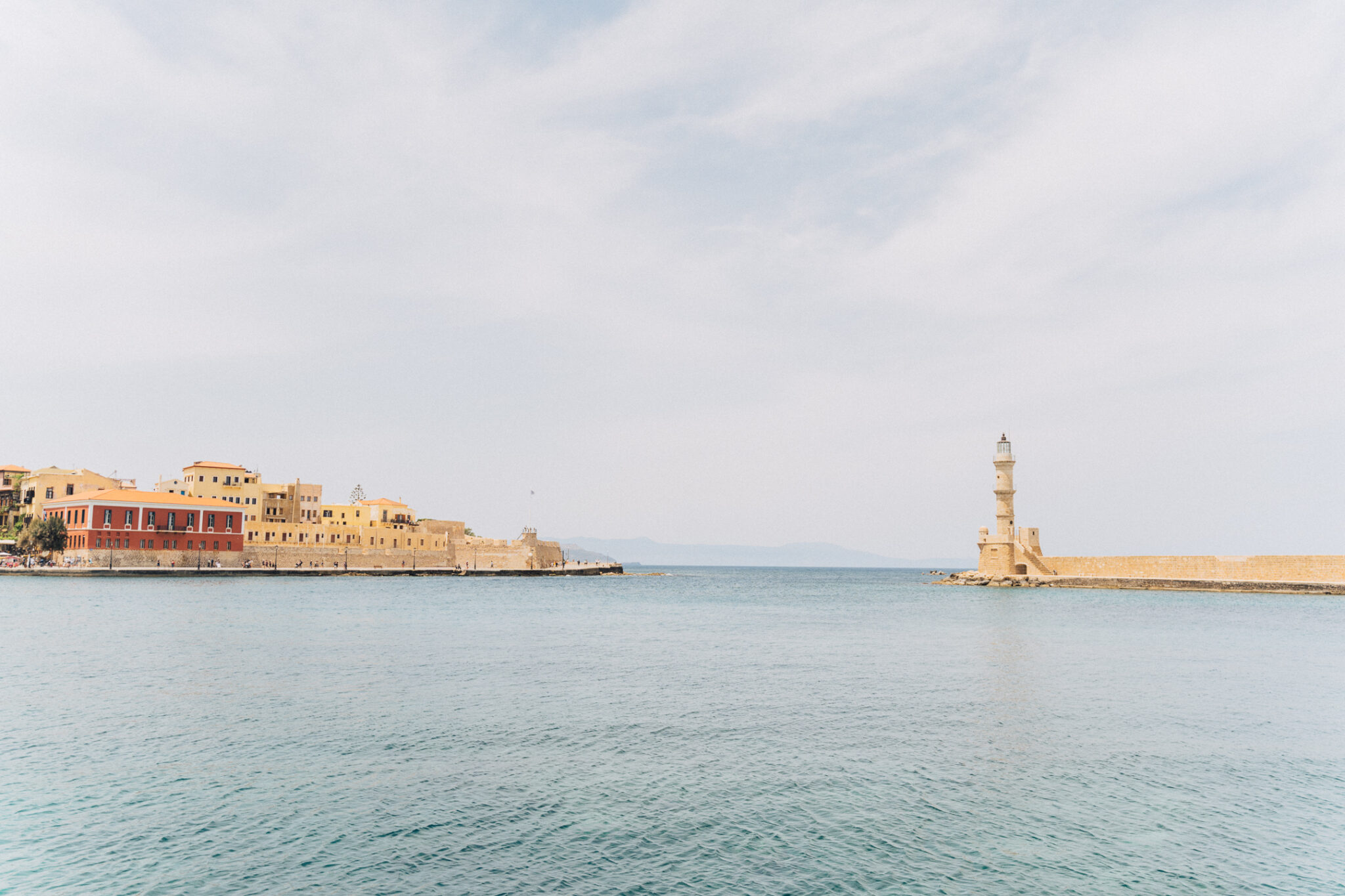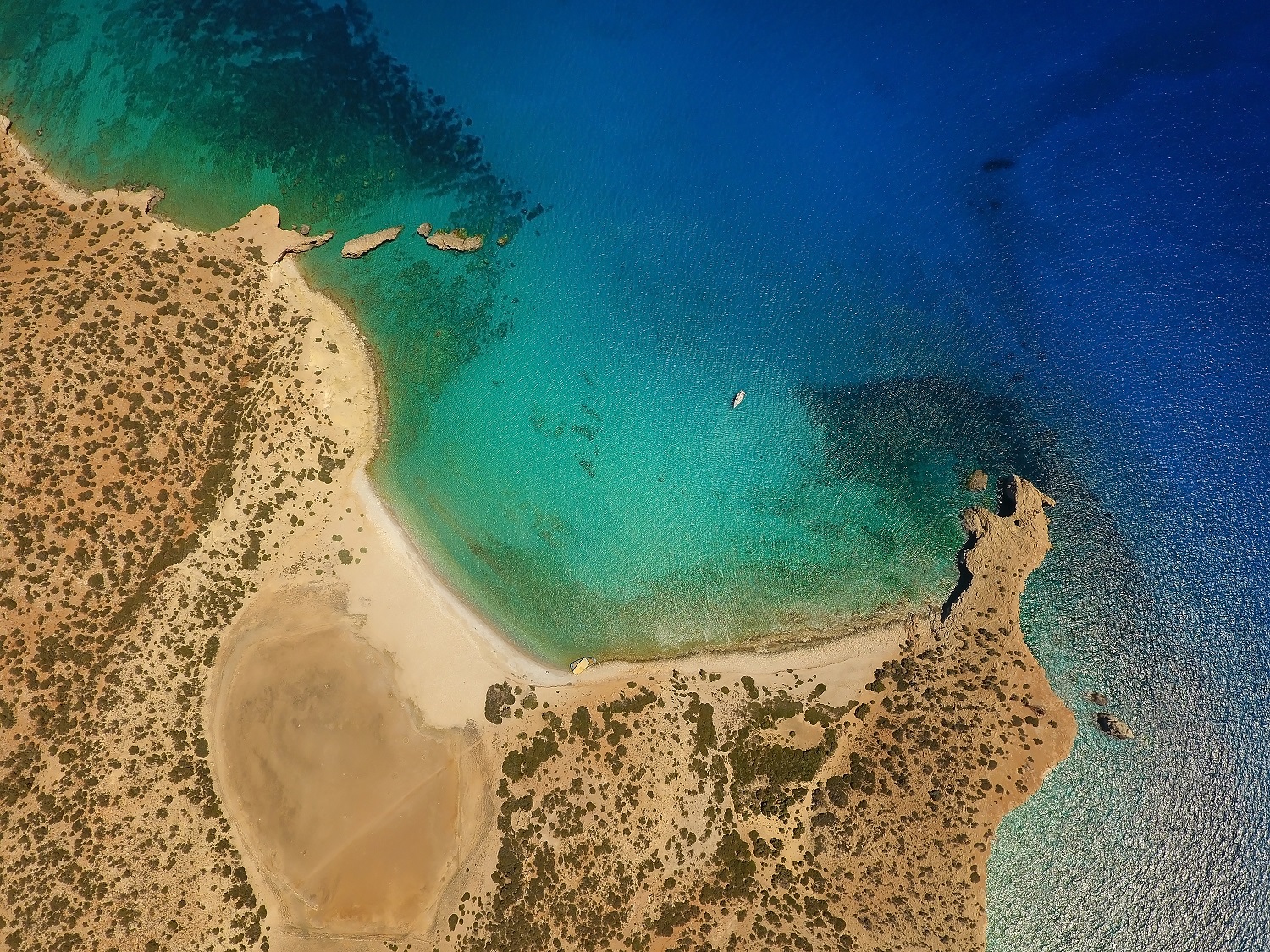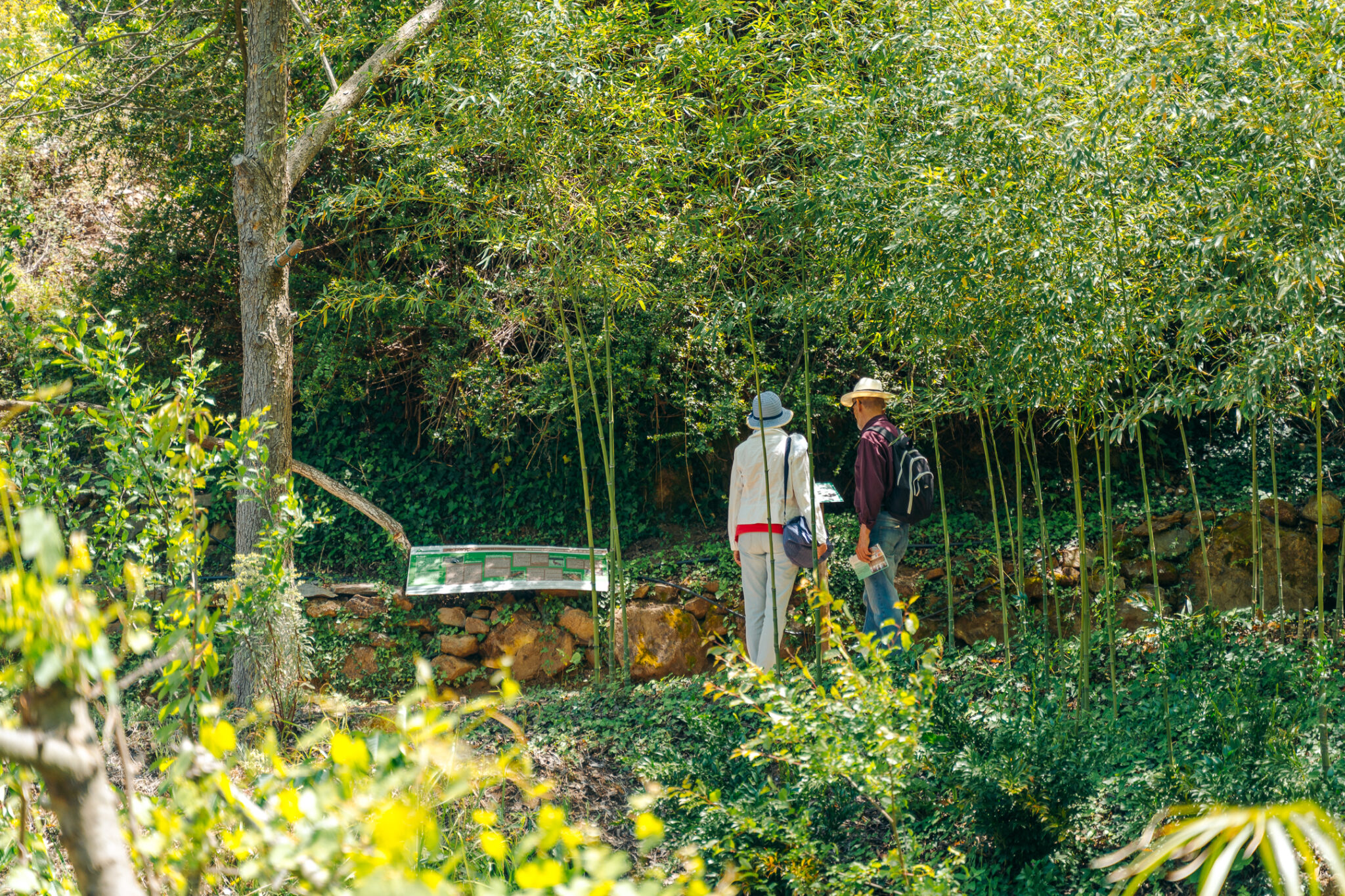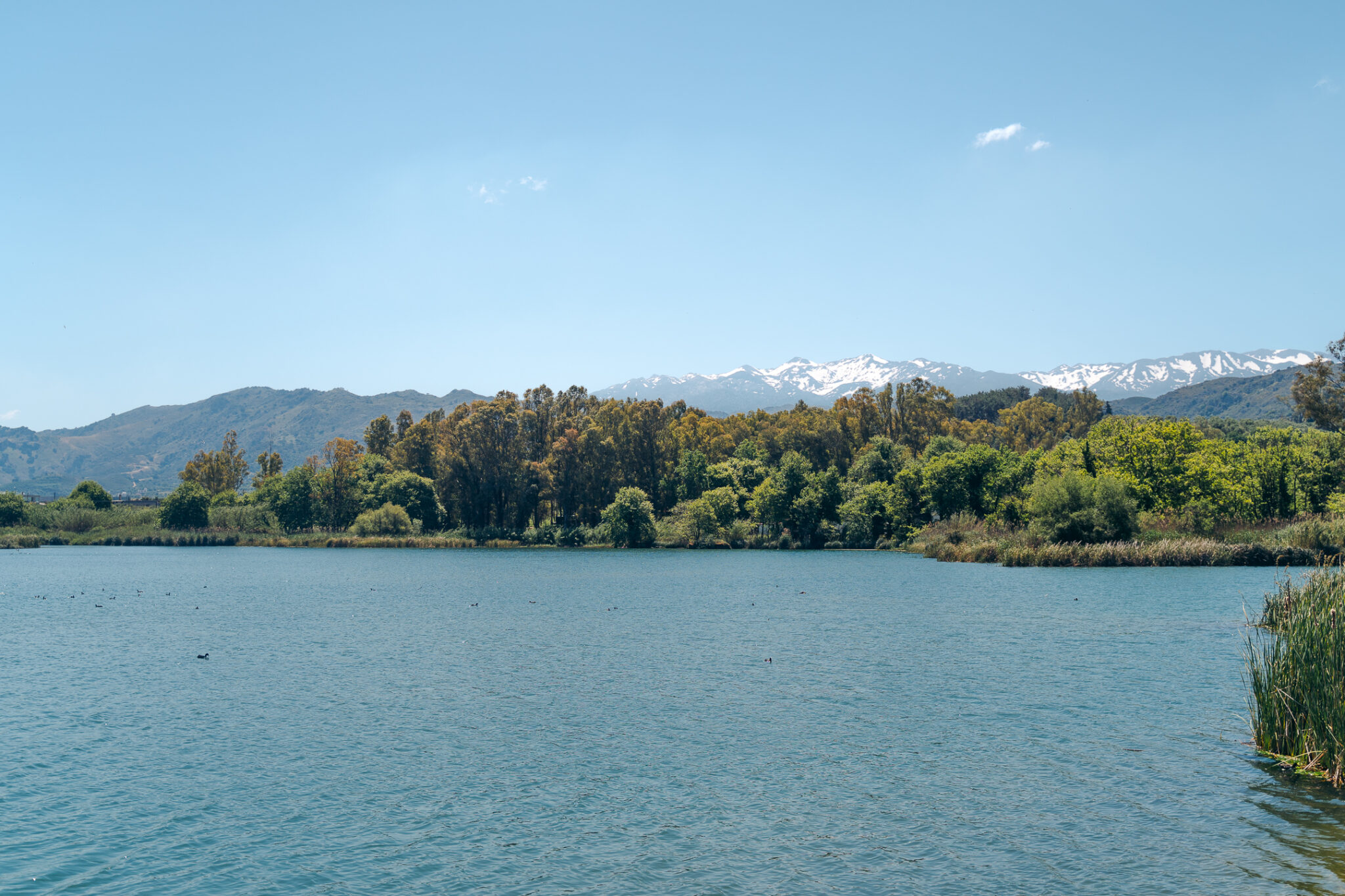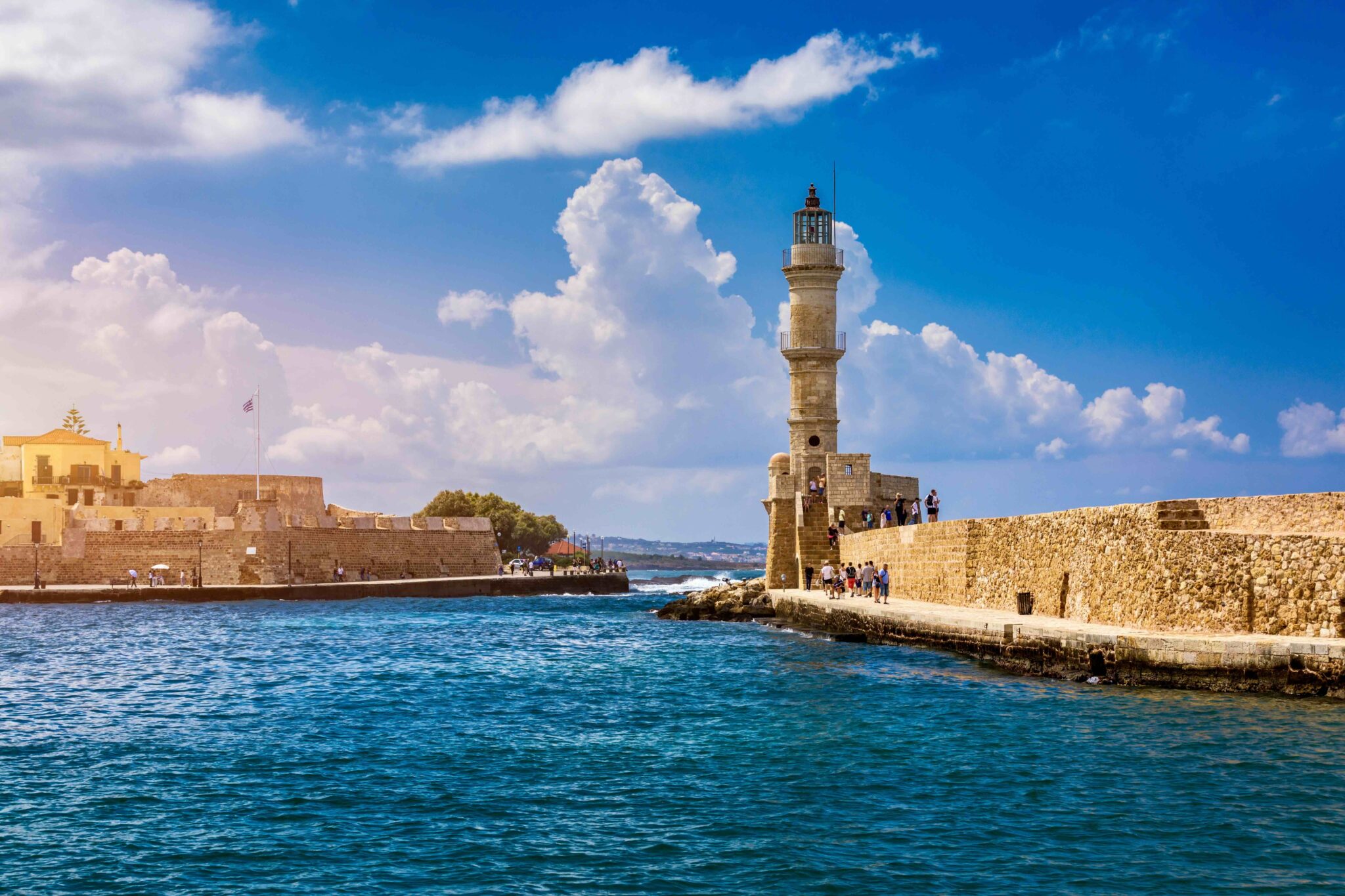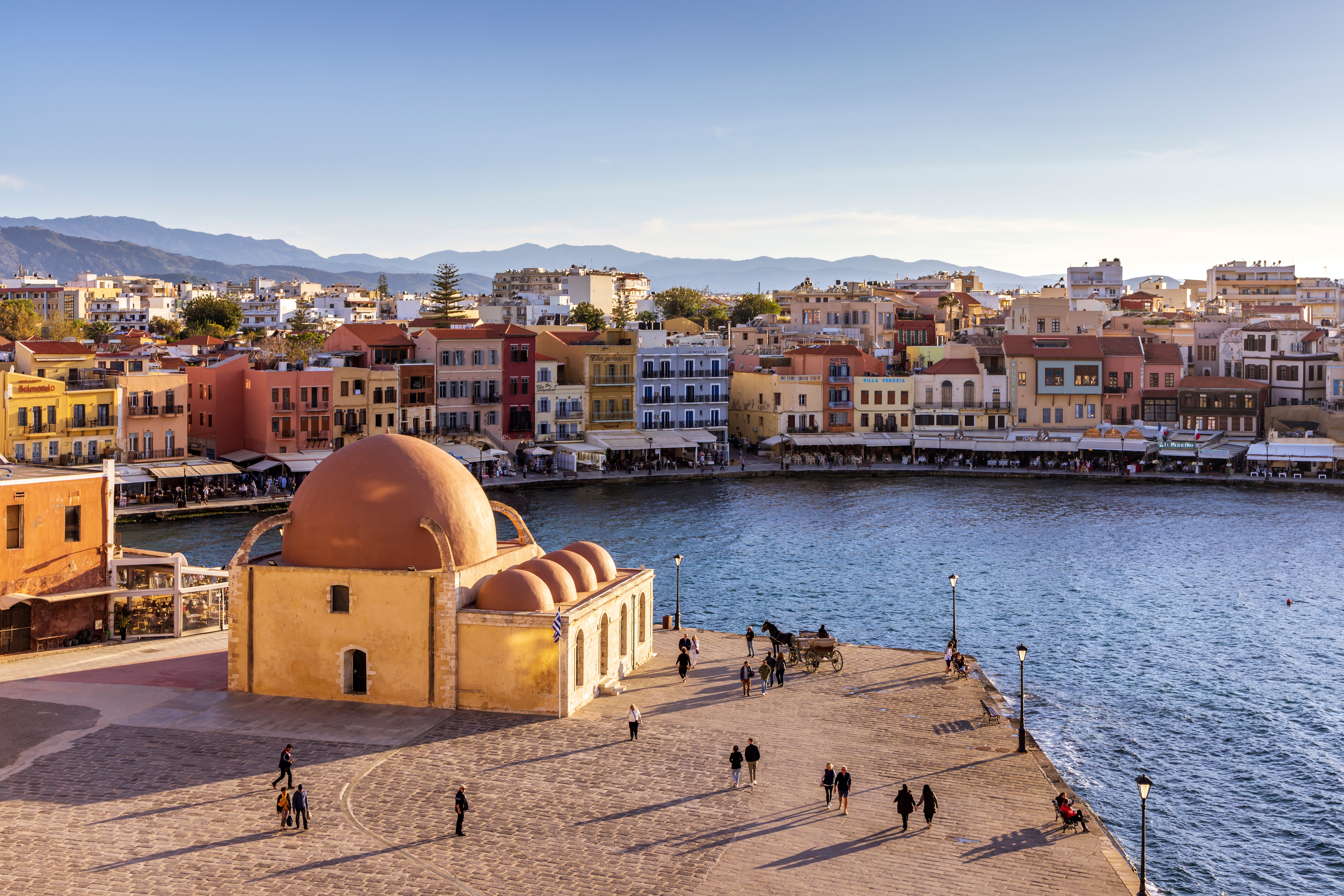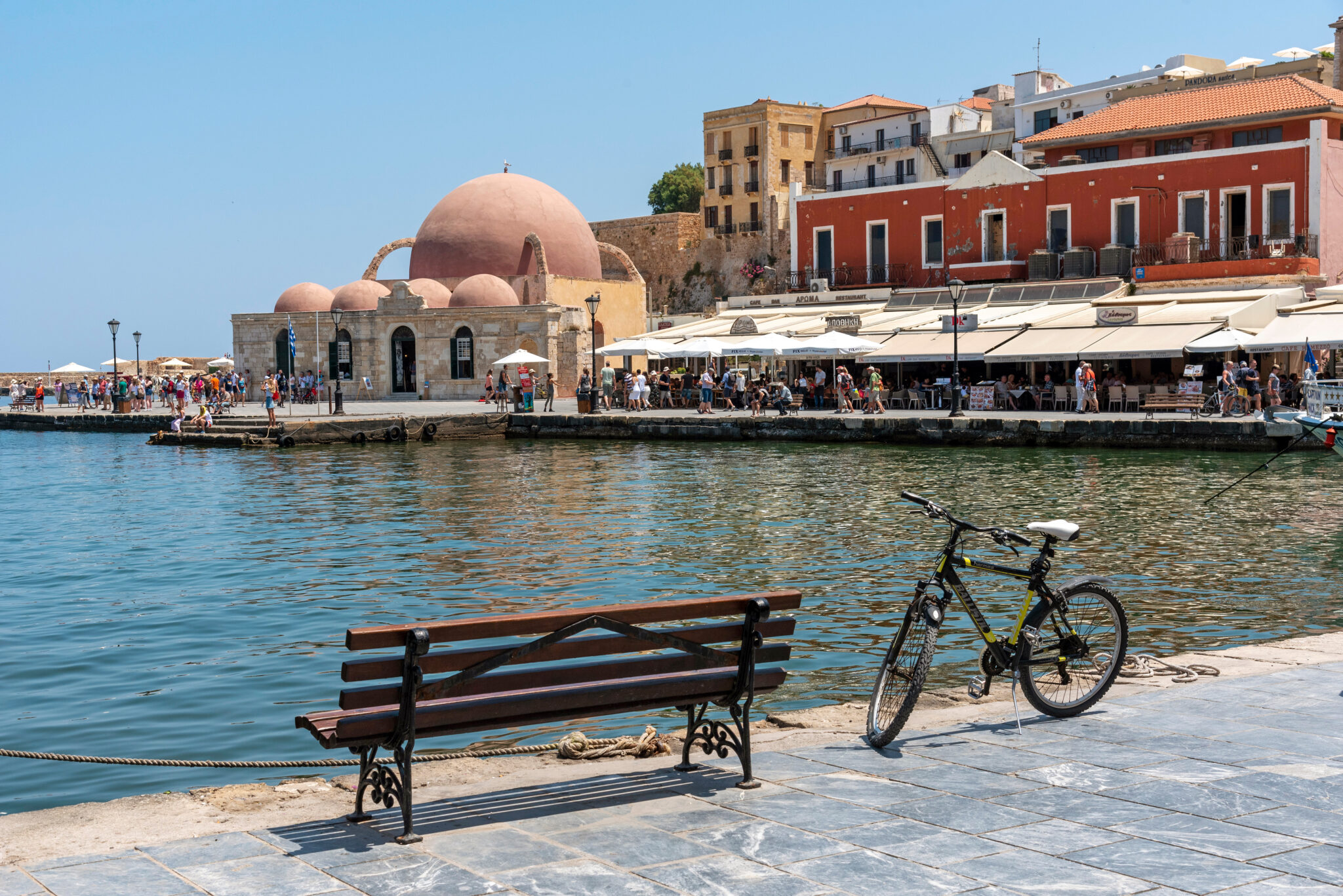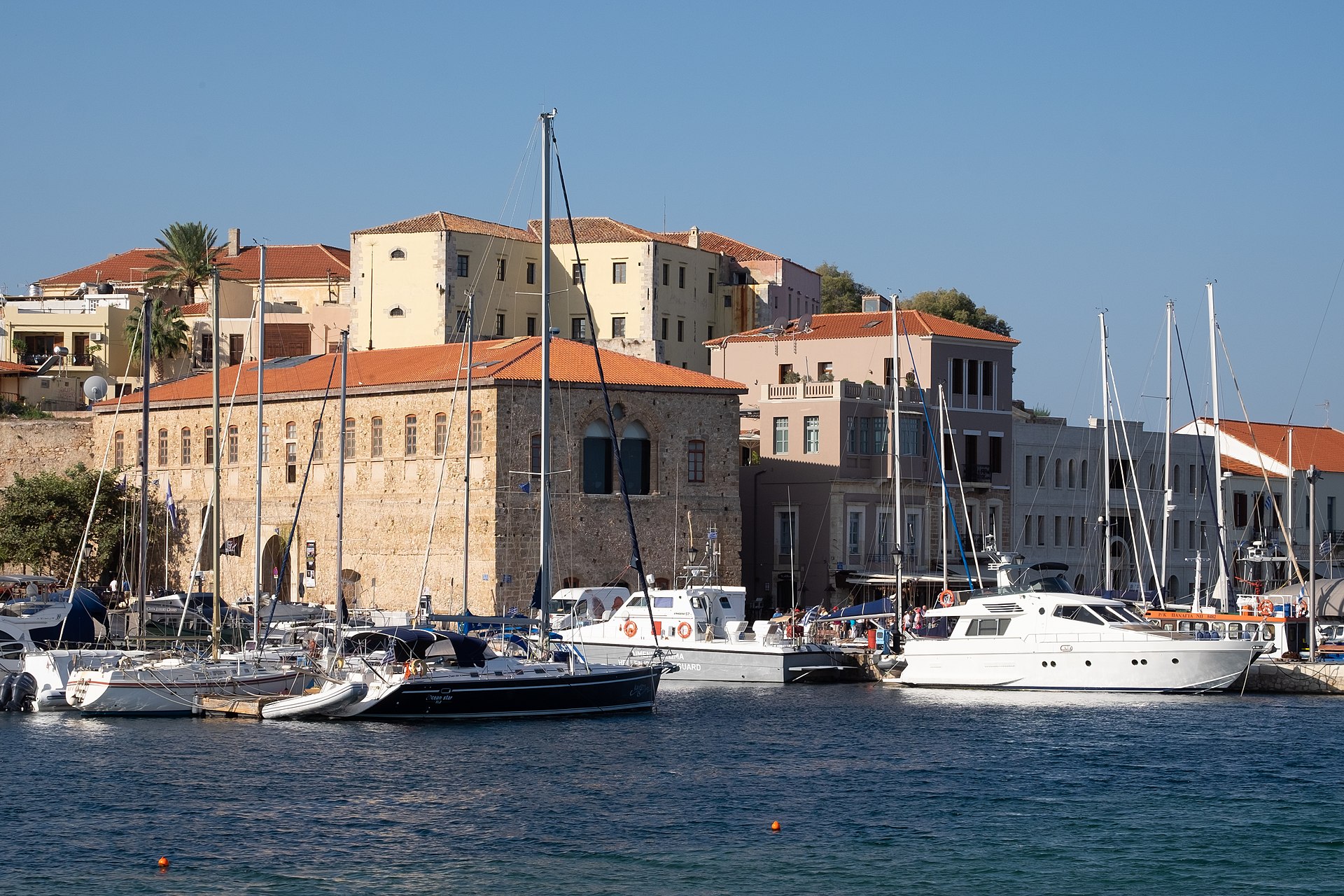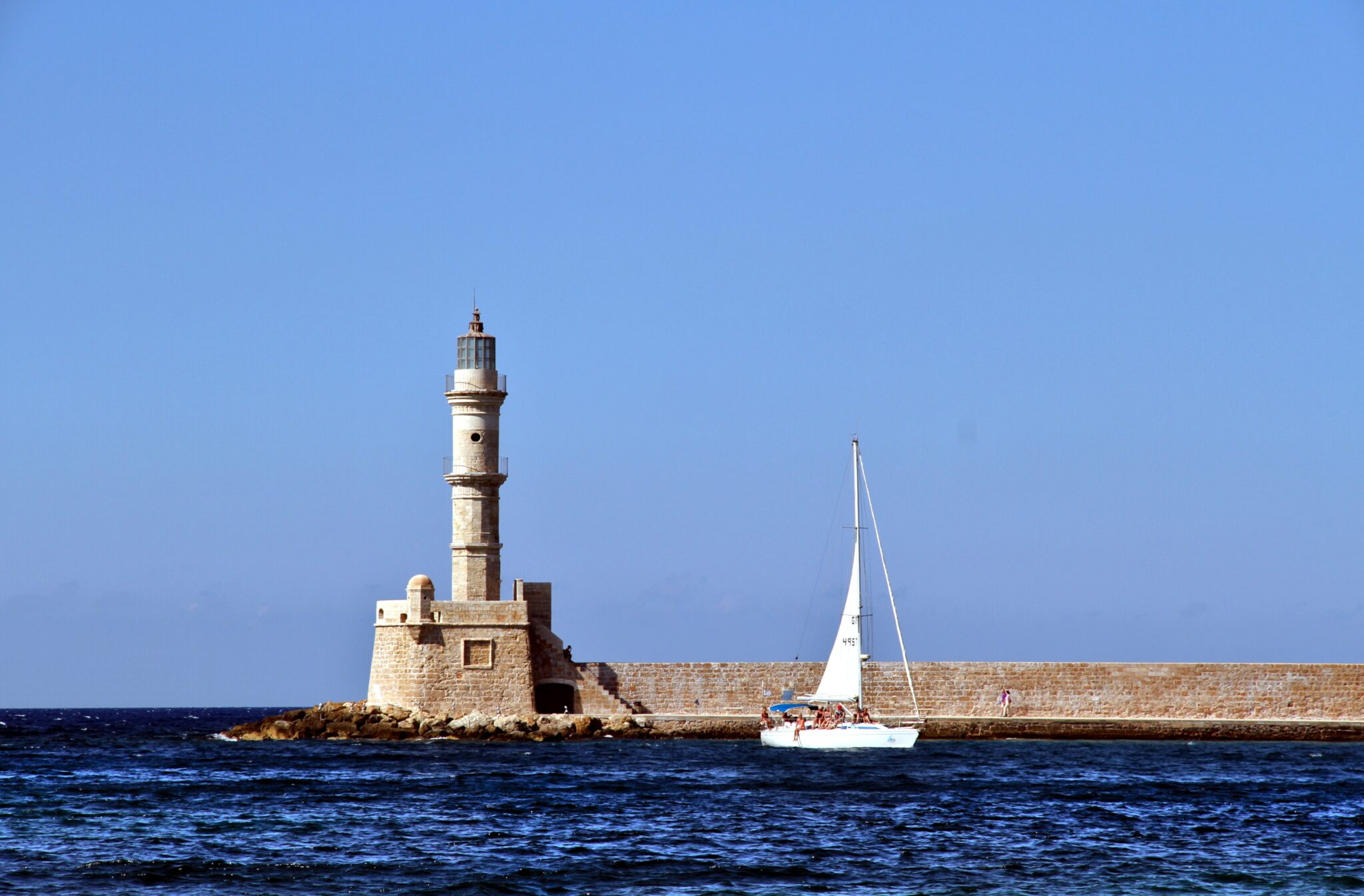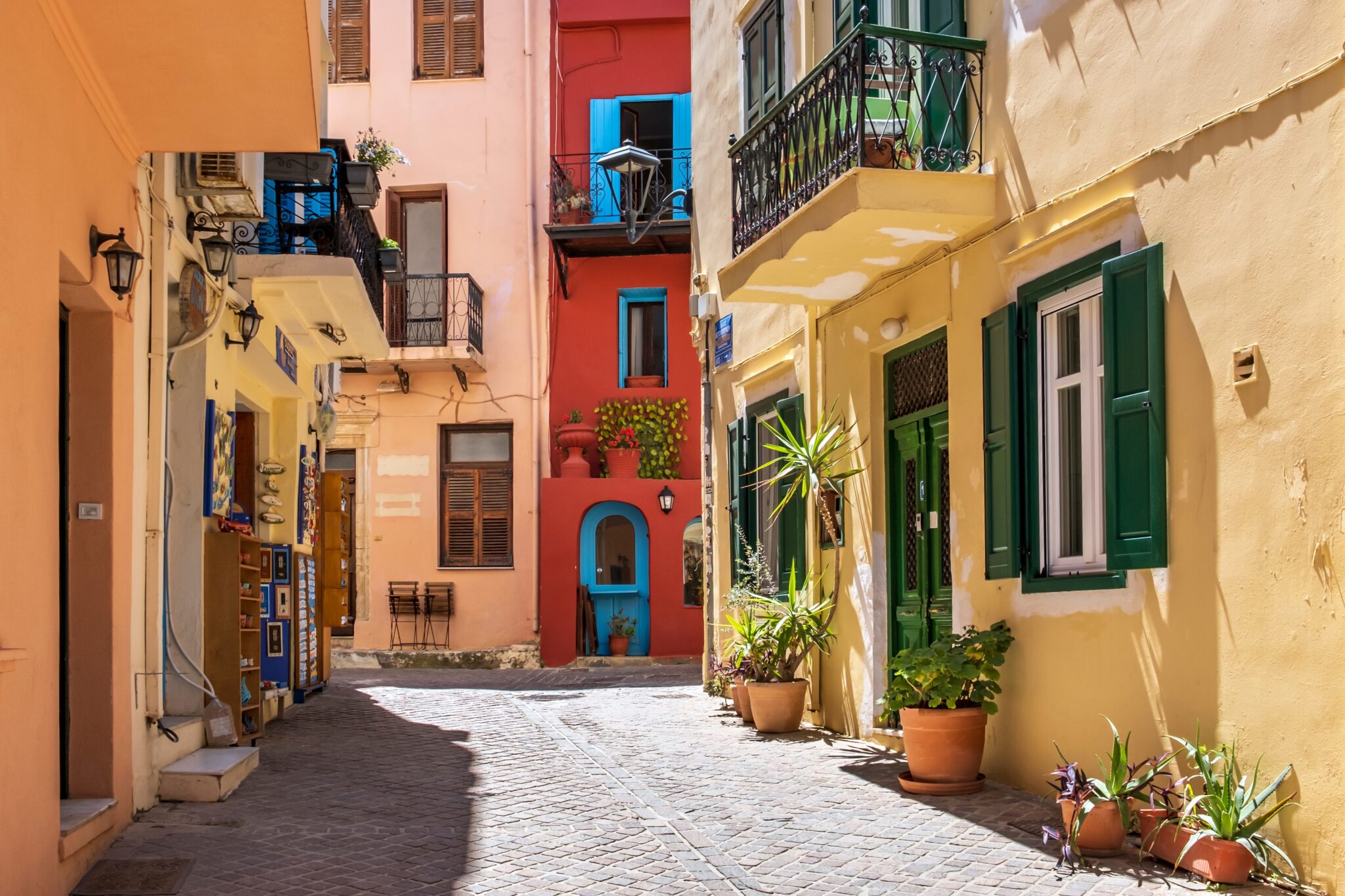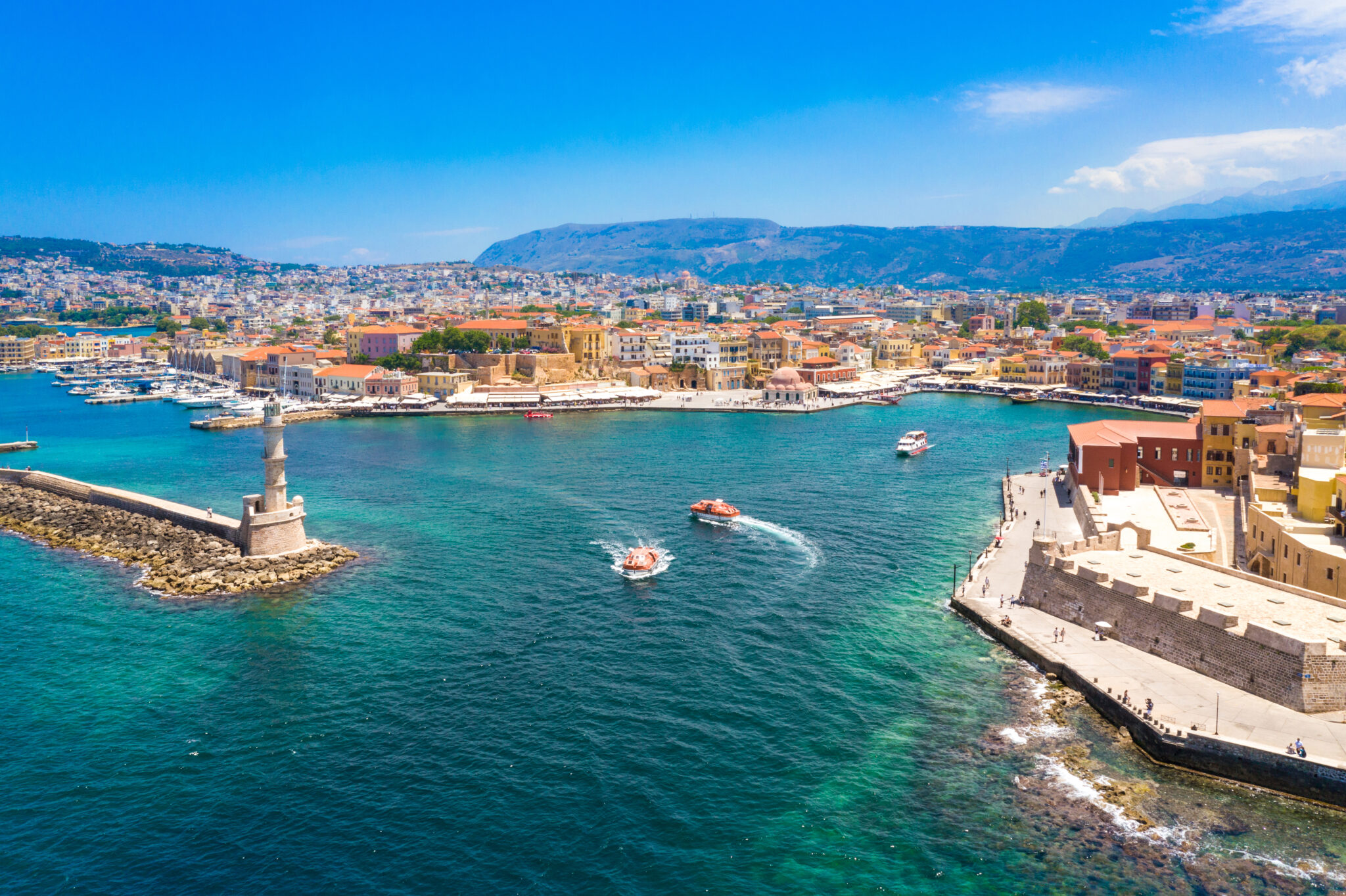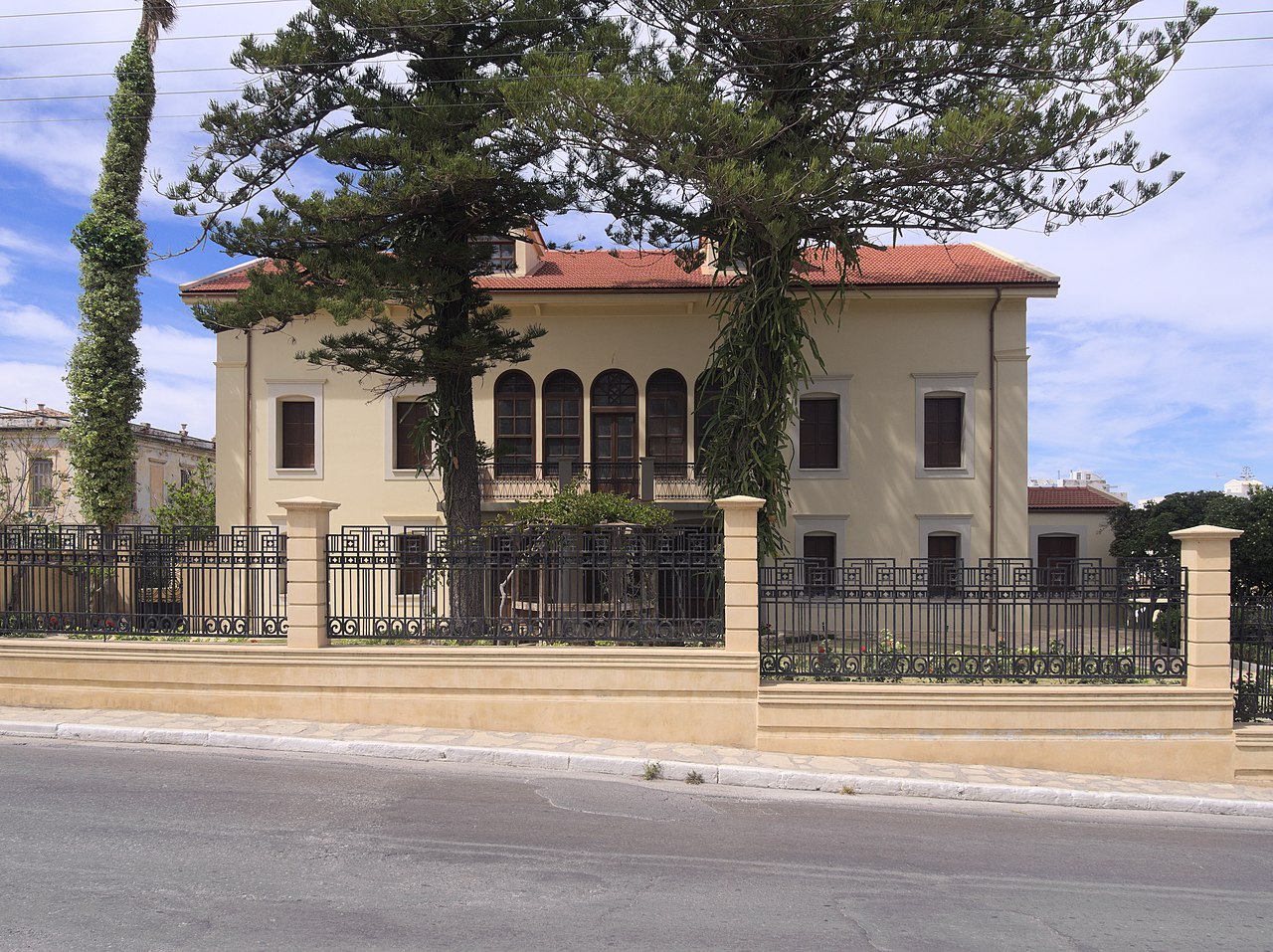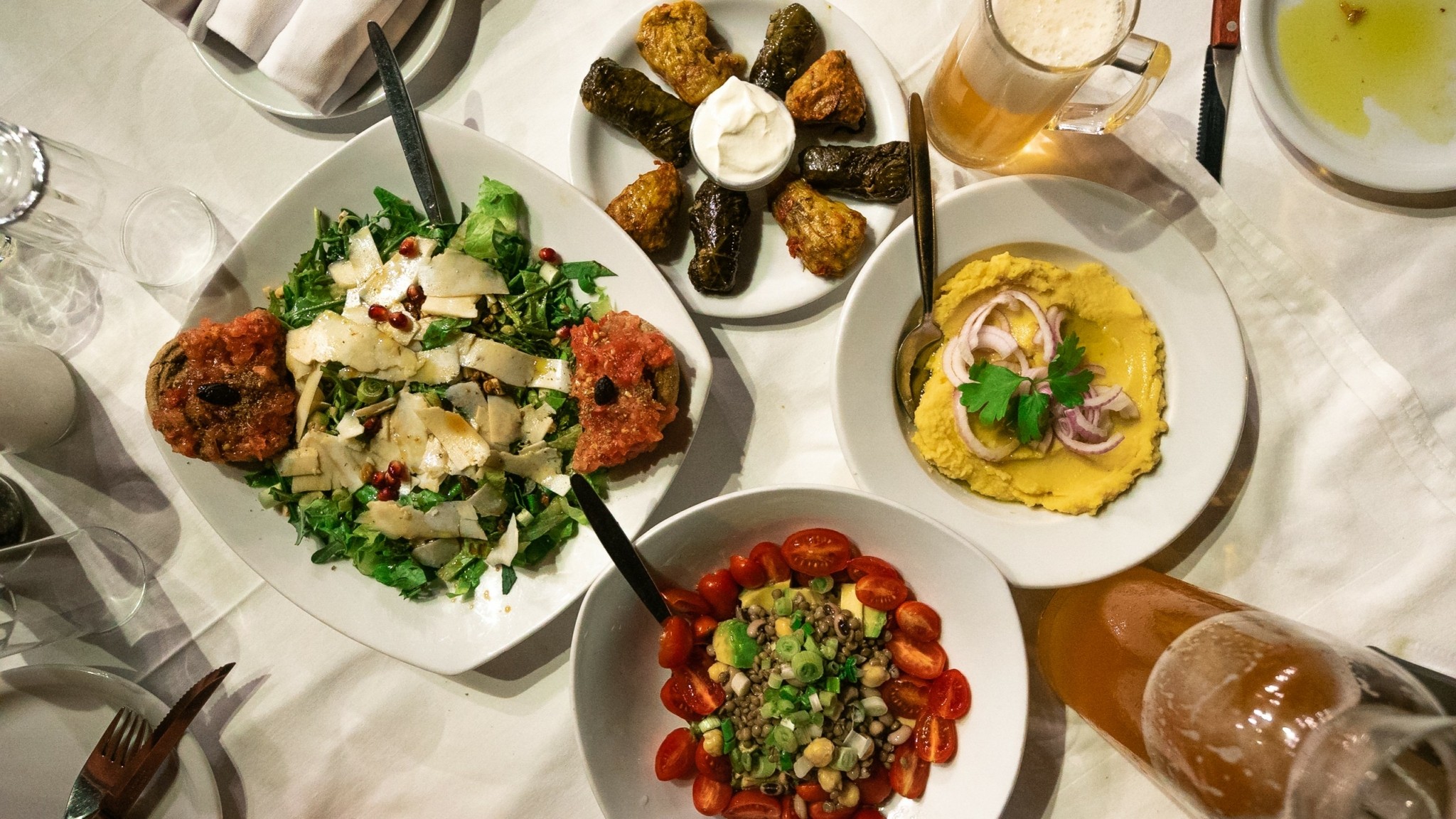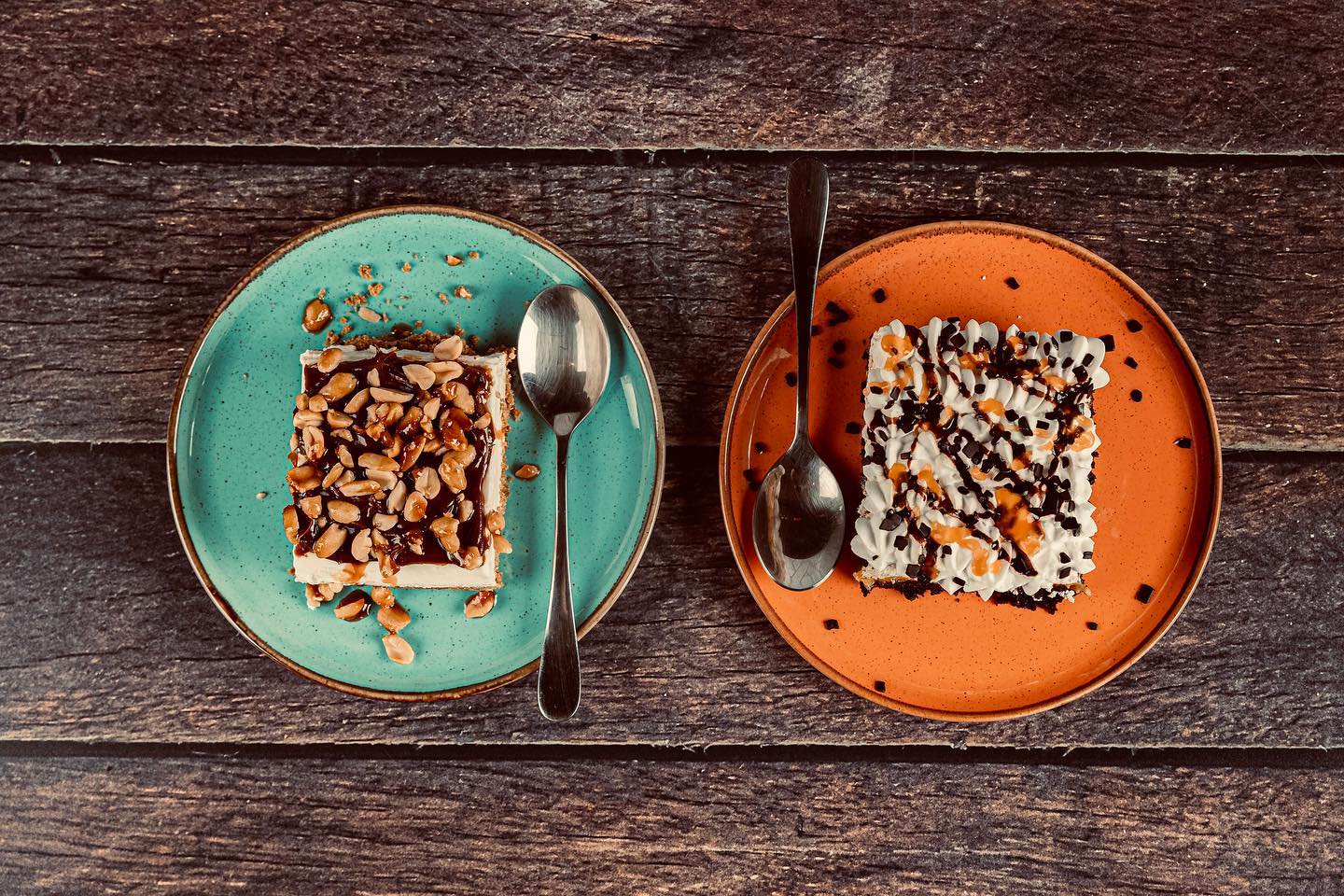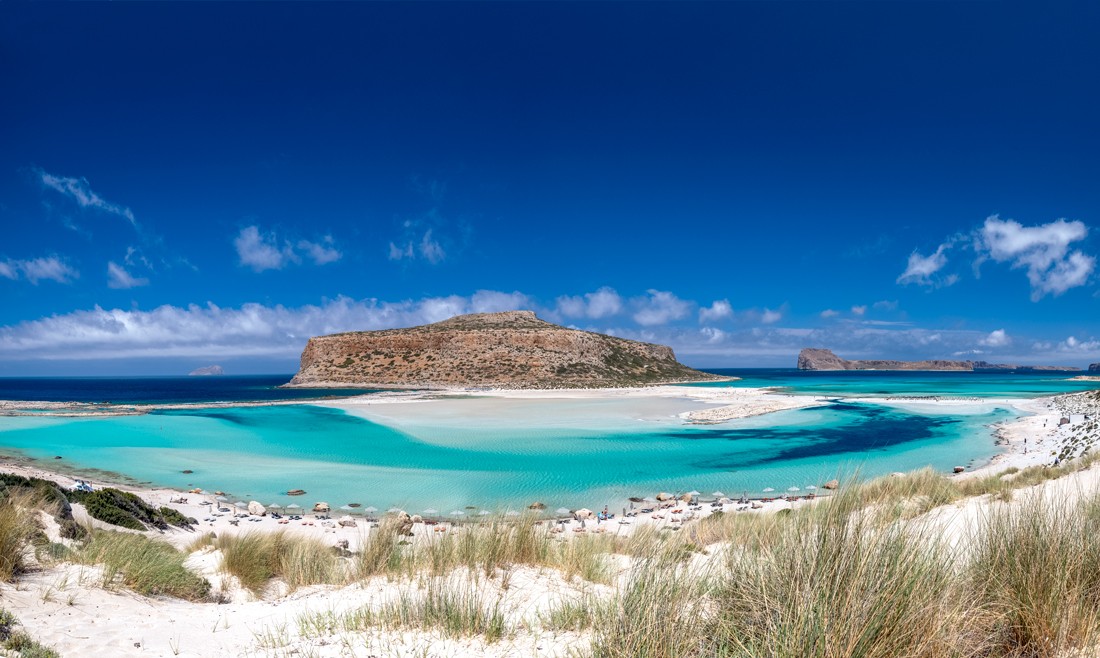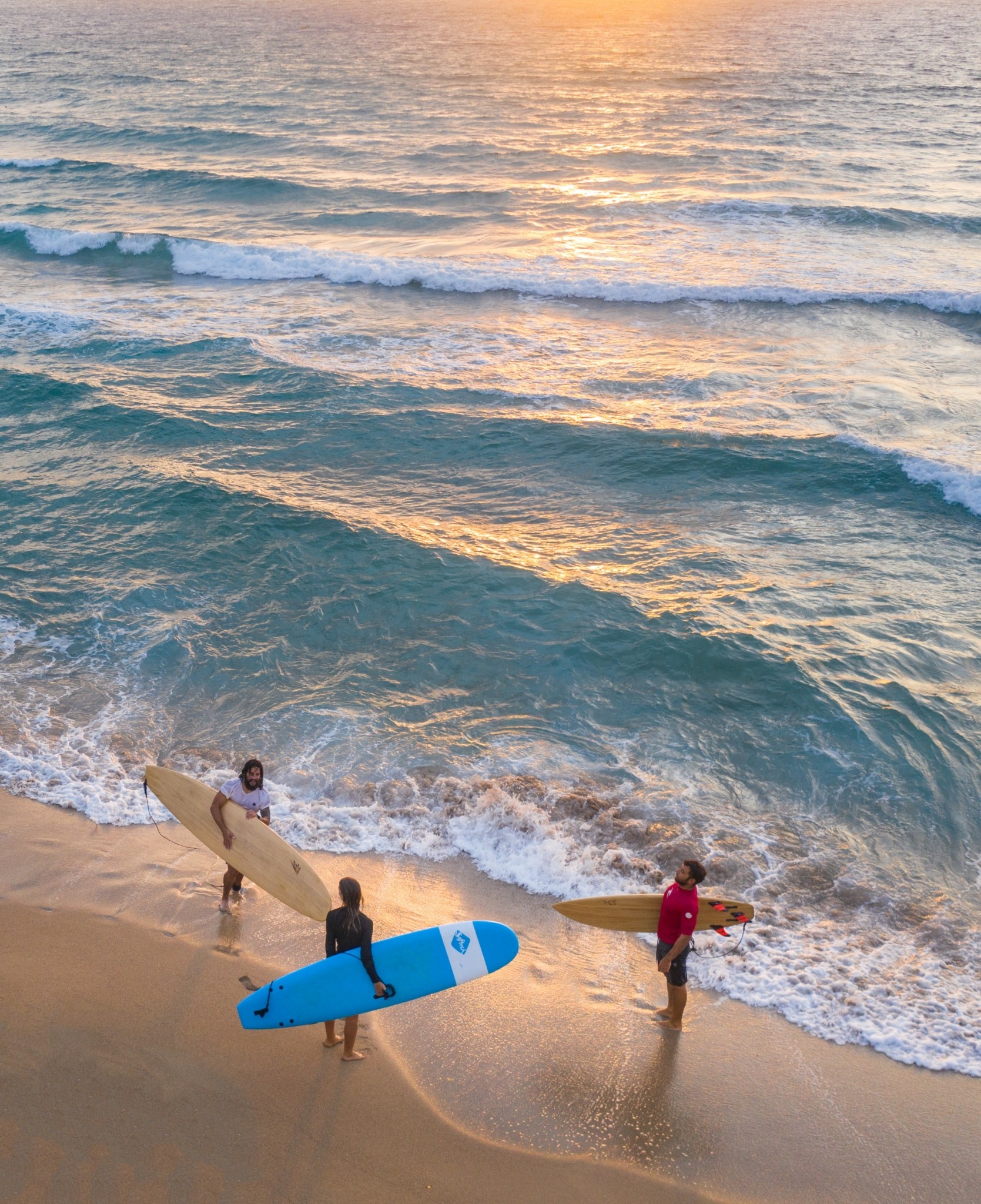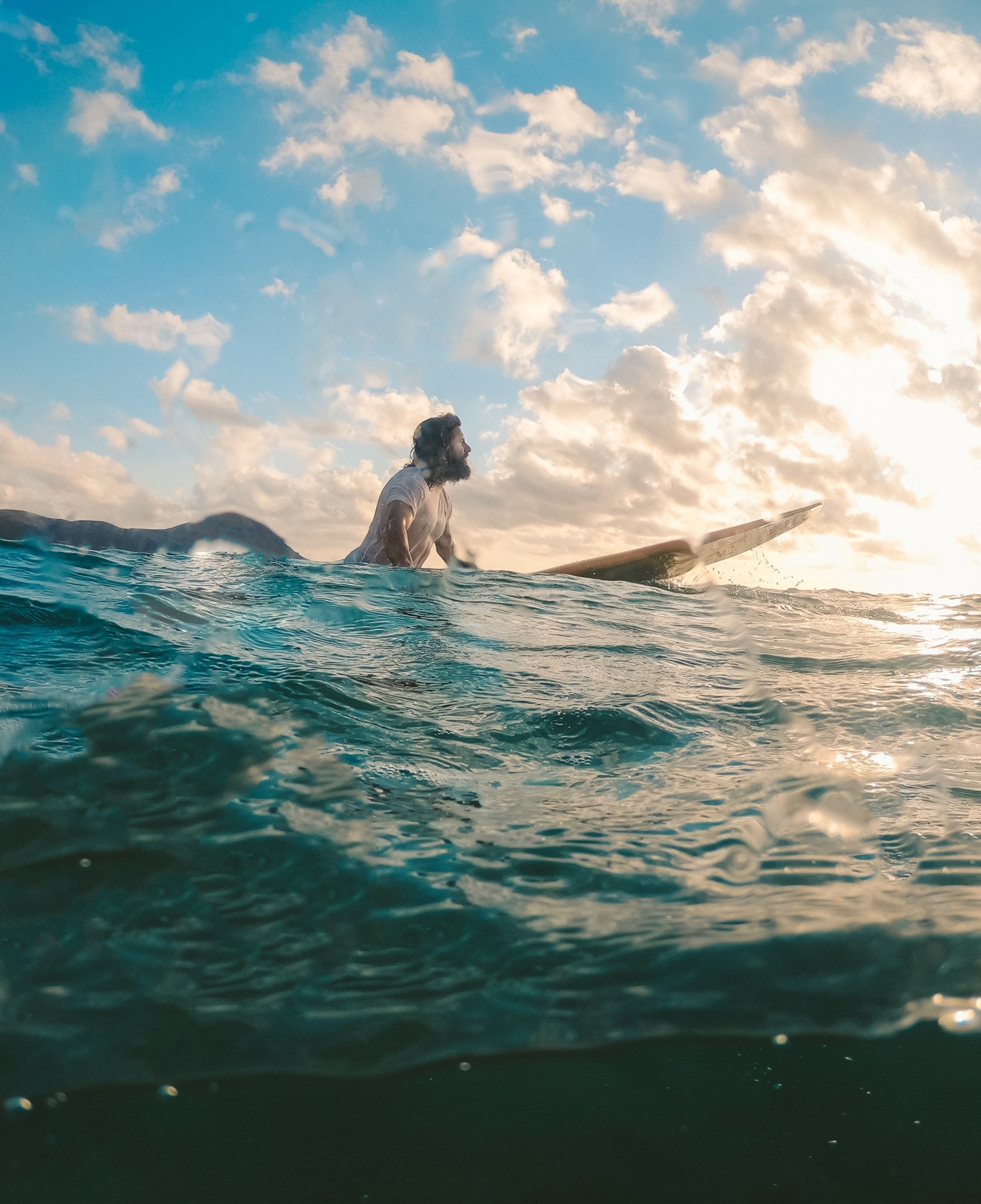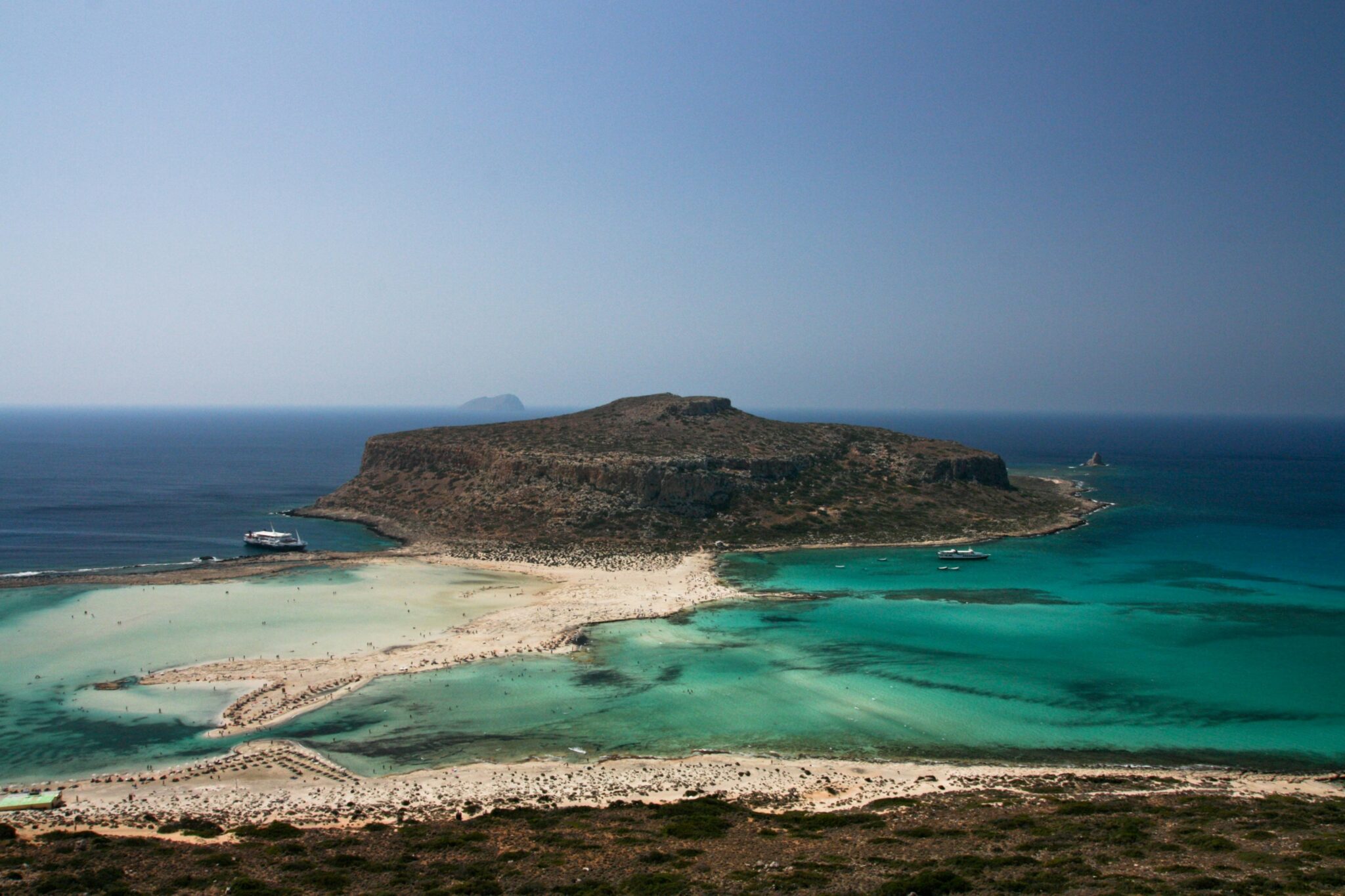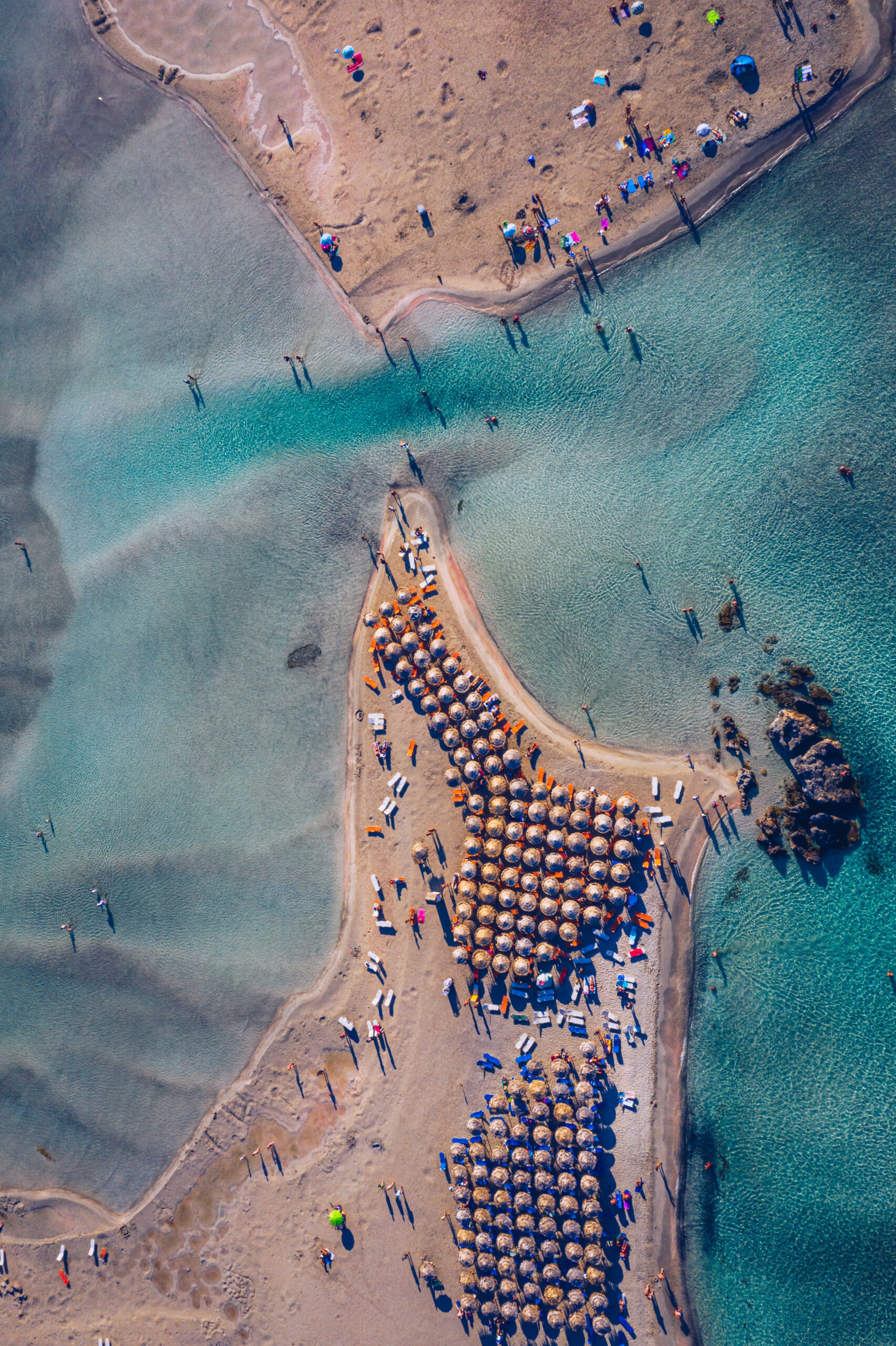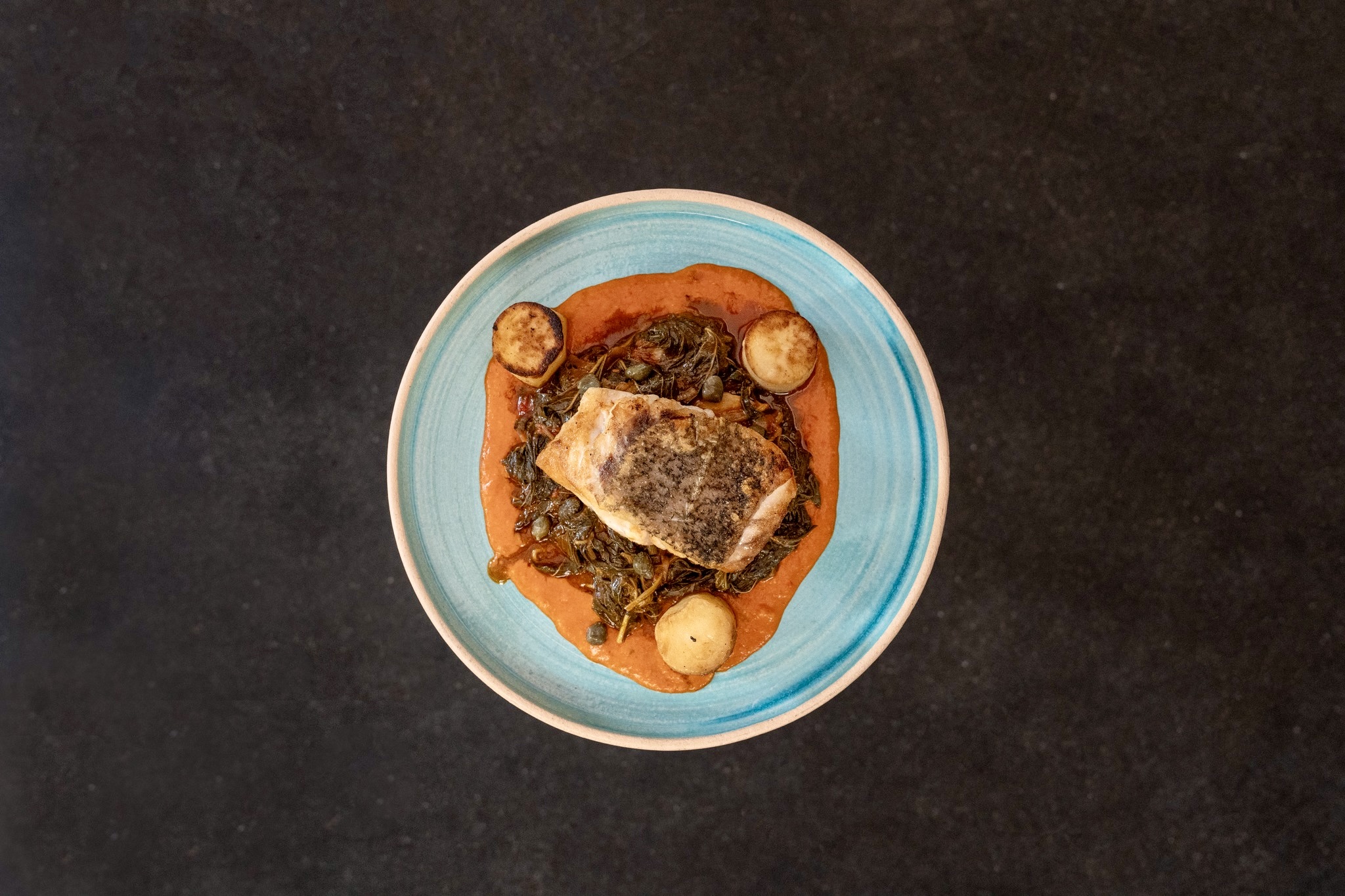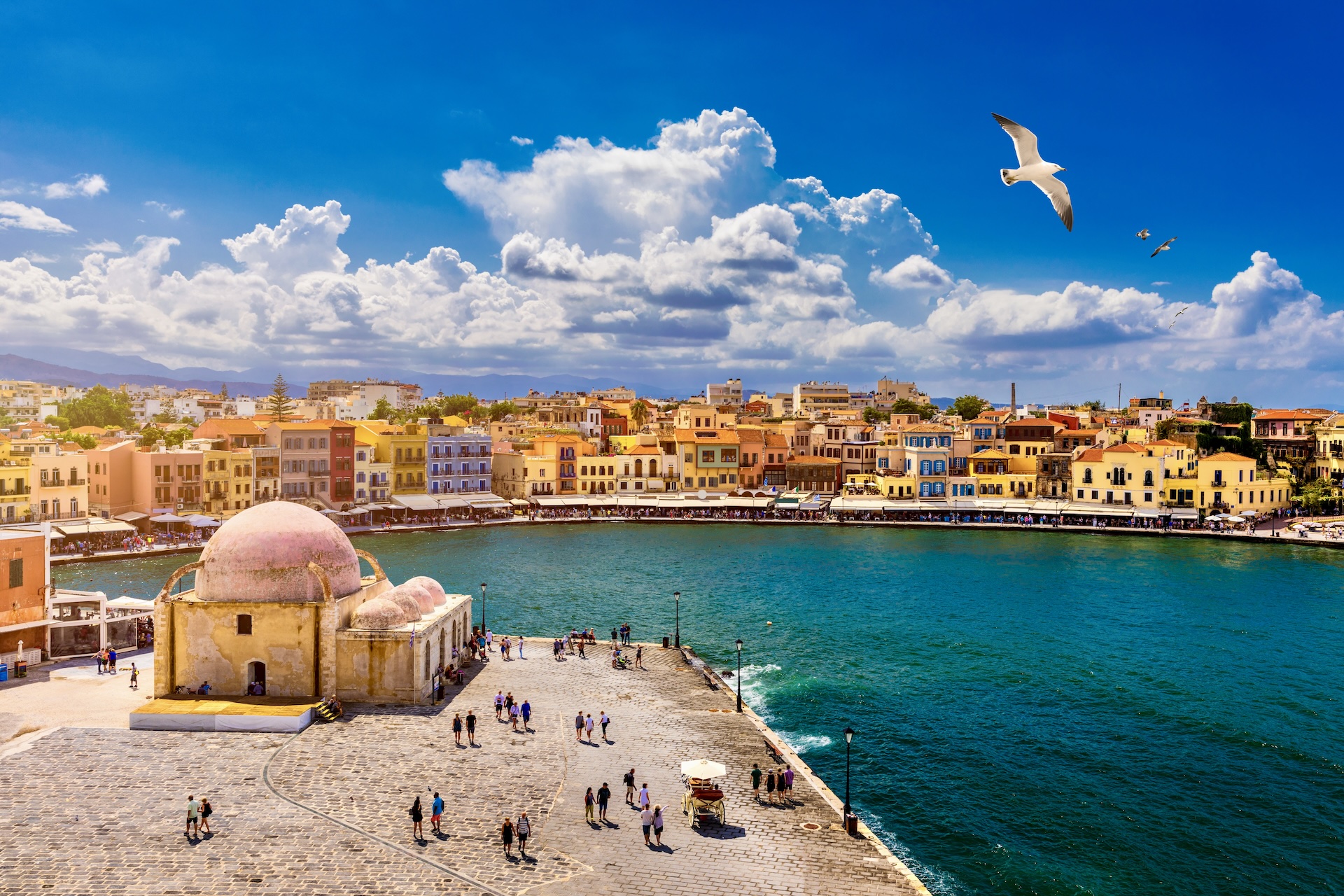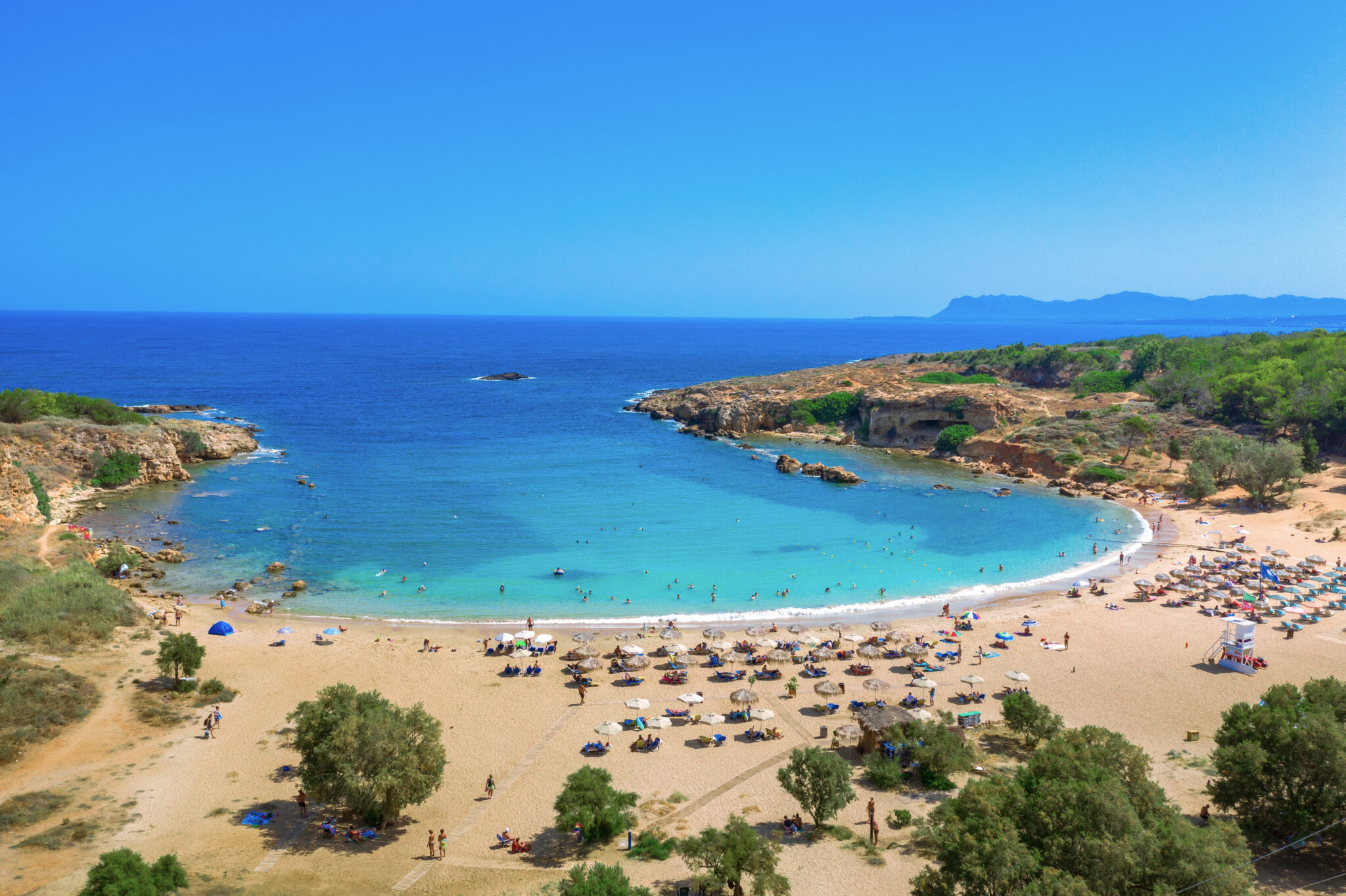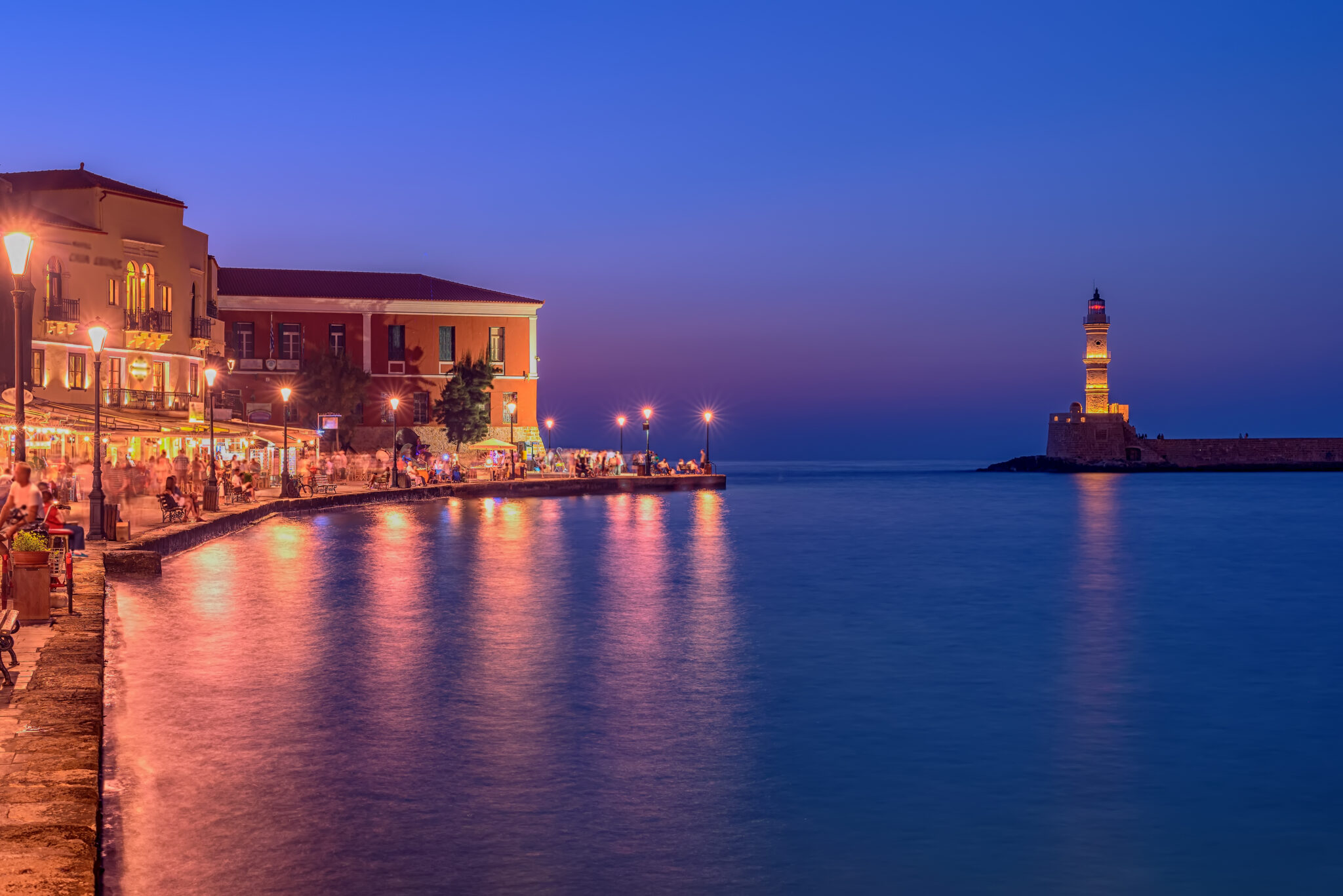A first visit to Chania, north western Crete, has some must-do’s that you won’t be able to avoid, and you’ll not be able to avoid wanting to come back and do it all again.
The evening ferry from Piraeus arrives extremely early at the port of Souda.
Finding yourself at the port, which sits less than five miles from Chania city centre and has undergone a facelift in recent years, you’re left with your first decision: whether to stay in Souda for a morning coffee or to head straight to the town of Chania for breakfast and a stroll around the super-scenic Venetian Harbour.
Morning Magic & Cultural Exploration
Summer mornings, before the heat and traffic hit in earnest, are ideal for enjoying the coastal walk. This long walk begins at the Firkas Fortress in the west, where you can find the Maritime Museum, and it continues on towards the Great Arsenal, originally a Venetian storehouse, which now houses the Centre for Mediterranean Architecture. Your walk then takes you past the remaining Neoria and all the way to the end of Akti Enoseos. From here, you can head towards one of Chania’s best known landmarks, the old Egyptian Lighthouse, or continue on towards Koum Kapi and the end of the beach.
Although mornings before the business of the day kicks in are an recommended time to take the coastal path, the route is most popular, and perhaps at its most beautiful, in the evening, as the sunset overtures – that magical hour when the universe seems at its most playful. As the sky and the sea engage in their daily evening flirtation, the buildings greedily soak up the last rays of sunshine, the boats in the marina bob gently to the beat, and residents and visitors enjoy and photograph this magnificent landscape. Newcomers look on in wonder, while those who have watched the sun set over Chania many times join them, endlessly enchanted by this nightly event.
A Walk Through the Old Town
Heading away from the sea, to take the long walk through the narrow streets of Chania’s Old Town is to take a journey through its history. Apart from the Venetian buildings that are almost everywhere, you pass through Topanas, the stately neighbourhood of the Christians, and then the equally smart Jewish quarter.
The area of Splantzia is a popular and beloved destination. In recent years, the old Muslim district has been particularly loved by the city’s youth and its more alternative residents and visitors. 1821 square is busy throughout the year and particularly worth a visit to see the church of Agios Nikolaos with its bell tower on one side and its minaret on the other.
City Center
It is evident in the daily life of the modern city, that Chania is revered by its people. Even in the lively centre, where all the services are concentrated and where most people work, people take time to relax, chat and enjoy themselves. Here, in the heart of the city, you’ll stop off in the Gardens to keep cool, to drink coffee and, if you have children, to make time to play. For the film-lovers among you, there’s an open municipal air cinema next door, housed in a 1930s building.
You’ll definitely want to head to number 24 Apokoronou to try the famous Iordan’s bougatsa, stuffed with creamy myzithra cheese and sprinkled with sugar and cinnamon. Then you’ll simply have to compare it with the Chania bougatsa across the street at number 37 – the optimal excuse to taste your favorite calorific treat again.
Next is a stroll through the Municipal Market, which only partially retains its former character, as it now houses several more “touristy” shops. And then, at midday, hurry on to 4 Voloudakidon Street to grab Oasis‘ delicate and succulent souvlaki, made with yogurt, before they run out.
By now, your life should have become a constant alternation of food and sightseeing. It’s worth hanging around Halidon Street for a while, particularly if you’re a lover of art and history. At no. 98 you’ll find the three-storey building of the Municipal Art Gallery of Chania, which hosts several exhibitions throughout the year.
A little further along is the old Archaeological Museum of Chania (the new Archaeological Museum is now 15 Skra Str.) the old Venetian church of St. Francesco with its lovely courtyard, that once housed the finds from the Late Neolithic and Bronze Age and from artefacts the expansive Mitsotakis Collection. Next door, Boheme, the all-day cafe-bar restaurant, serves excellent cocktails and a renowned brunch. If you’re just in the mood for dessert, you can walk a few yards further and at number 18 on the tiny street of Prosodia Street you’ll find Sketi Glyka, all of whose creations are pure sweetness.
Off Center
When traveling through Crete, and in particular when visiting Chania, a car is a must, even for shorter trips, such as to visit the historic neighborhood of Chalepa or the Venizelos Trenches in Akrotiri.
Chalepa is the kind of neighbourhood that makes you want to stay a while, near to the city centre, yet feeling a world away, with mansion houses all around, including the Eleftherios Venizelos Museum House where the great politician spent most of his life.
Chalepa is also home to the church of Agia Magdalene, which began construction in 1901 and is of Russian architecture and style. It is worth making a stop at the picturesque old cafe Dagli, on the street of the same name, and then visiting Oxo Nou Studio, a self-service restaurant, which gazes out over the water in its location among the rocks and mostly abandoned old tobacco houses. Alternatively, at number 35 Vivilaki, at Tabakaria you can find the famous Thalassino Ageri, where you can eat seafood and look out at the sea.
Further uphill, on the way to Akrotiri and the airport, it is worth devoting an afternoon to visiting the Tombs of Venizelos (Eleftherios and his son Sophocles). Here you’ll find fantastic views of the city of Chania from above. This place is also home to the chapel of Prophet Elias. Then you can spend some time relaxing at either Koukouvaya or Carte Postale for the best views along with unforgettable food and drinks, coffee and desserts.
Beach Hopping
During the holiday season in Chania there are all-day excursions to the west of the island, and the chance to dive in exotic seas and visit beaches that are among the best in the world. The journey begins at the stunning Balos Beach. Here you can take the opportunity to drive to the end of the dirt road and continue along the trail. This way you will be sure to get a stunning photo of the beach from height. Perhaps a more relaxing way to see Balos however, is to take an excursion by boat from the port of Kissamos. You’ll visit the Imeri Gramvousa with its shipwreck and the Balos lagoon with its pink sand and turquoise waters. This area is fully integrated into the Natura network. It hosts rare species of flora and fauna, such as the Loggerhead sea turtles.Nearby, be sure to visit the excellent Gramboussa restaurant.
The itinerary for the first, and every, beach-hopping adventure must include Falassarna with its sandy beaches and fantastic waters. You should take a look at the weather forecast before the trip. At its calmest, the sea can resemble a swimming pool, but when the wind picks up, there is fun to be had playing in the waves. Beach-bar Liokalivos was a welcome new arrival to the long beach at Falassarna last year, from the co-owners of Athens-based The Clumsies Bar and Otto’s Athens Vermouth, where you’ll find Cretan chef Manolis Papoutsakis at the restaurant. Your best dining option is at Limeniskos Platanos a short drive away, where you can seek out Captain Nikola for fresh fish.
Next up is the famous and timelessly wonderful Elafonissi; an excursion you’ll enjoy if you arrive early in the morning, as it gets crowded from noon onwards. The small island is located 200 metres from the coast and is reached by walking in the shallow waters. Pink sand from broken shells and clear waters are the characteristics of this beach, which completes the first-timer’s beach-hopping experience in the best way possible.
Continue reading:



